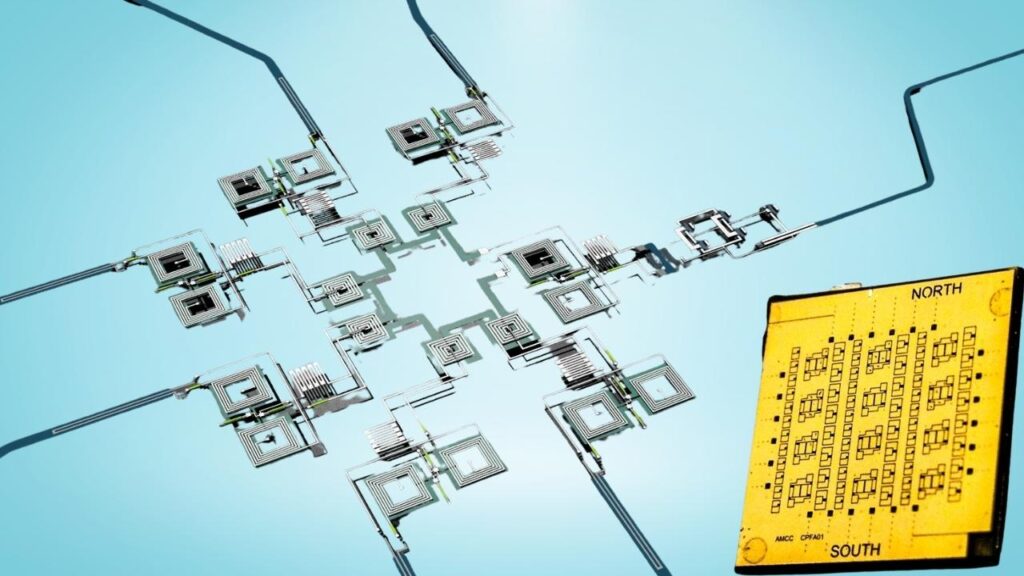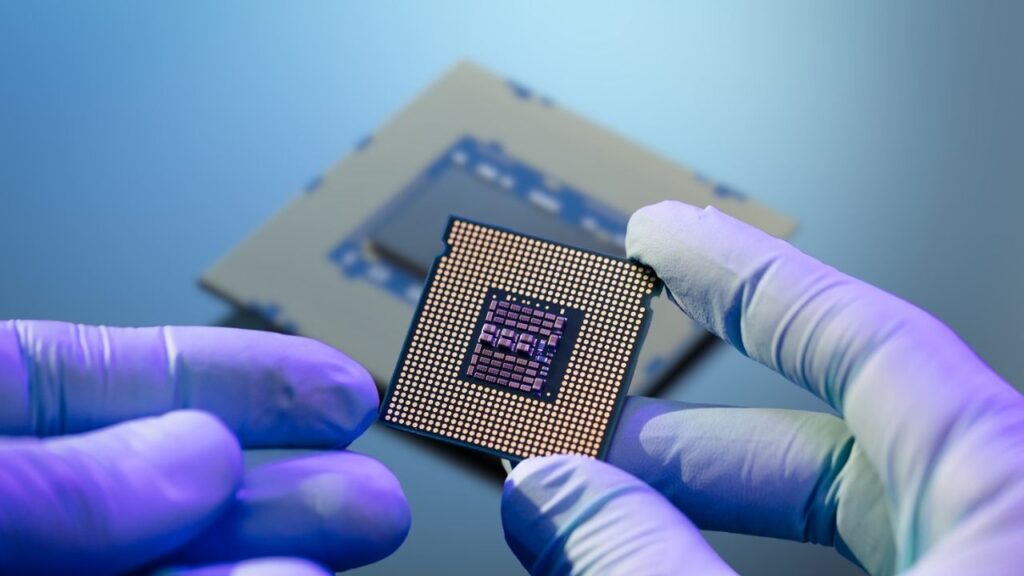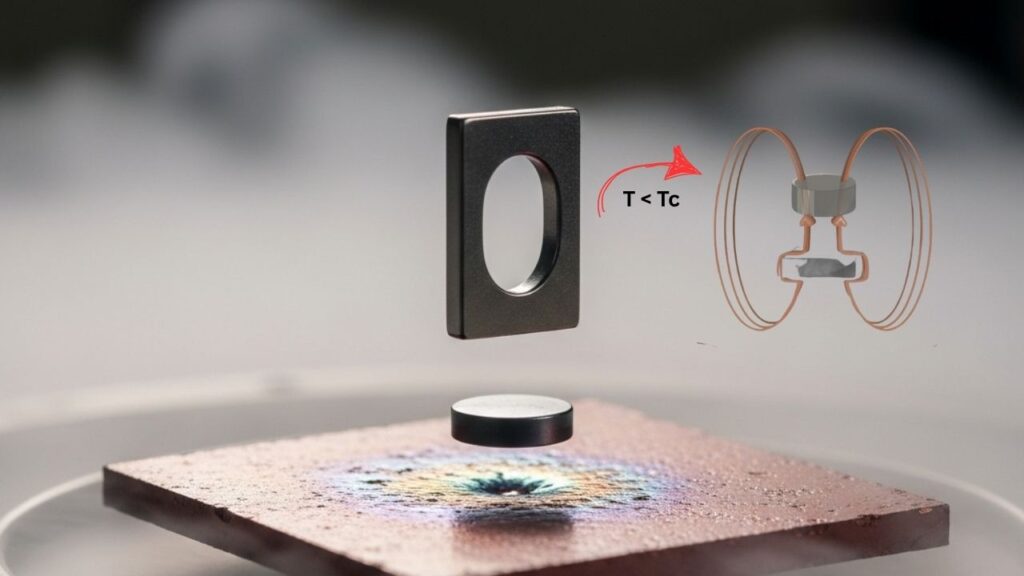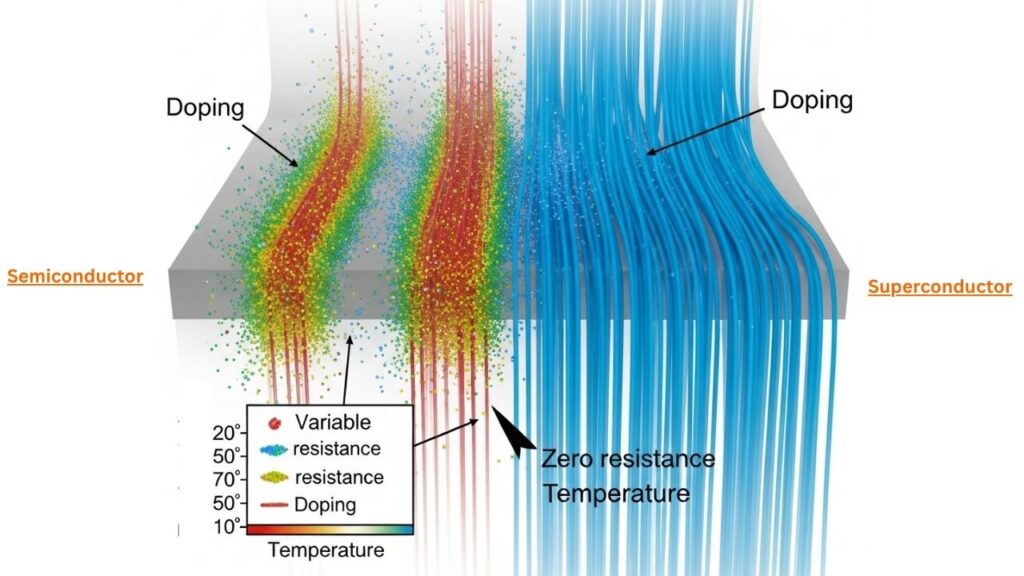Superconducting Circuits: The world of technology is on the brink of a major transformation with the rise of superconducting circuits. For decades, semiconductors have powered everything from smartphones to supercomputers. Now, researchers are revealing that superconducting circuits may soon replace these traditional semiconductor components, especially in quantum and high-performance computing systems. This shift could lead to computers that are faster, more energy-efficient, and capable of handling the growing demands of our digital world.

Why Superconducting Circuits Matter
Superconducting circuits are special electronic circuits made from materials that, when cooled to extremely low temperatures, conduct electricity with zero resistance. This means they don’t waste energy as heat, unlike traditional semiconductors. Imagine a superhighway where cars (electrons) can travel forever without slowing down or running out of fuel—that’s what happens with electricity in a superconductor.
This unique property makes superconducting circuits incredibly attractive for the future of computing. As our need for processing power grows—think of all the data centers, AI, and quantum computers—energy use is skyrocketing. In 2023, U.S. data centers alone consumed about 176 terawatt-hours (TWh) of electricity, with over half of that used by CPUs and GPUs. That’s more than the total electricity used by some entire countries!
Superconducting Circuits
| Feature/Stat | Details & Insights |
|---|---|
| What are Superconducting Circuits? | Circuits made from materials that conduct electricity with zero resistance at cryogenic temperatures. |
| Main Advantage | Near-zero energy loss, ultra-fast operation, reduced heat generation. |
| Current Limitation | Must operate at extremely low (cryogenic) temperatures, close to absolute zero. |
| Energy Use in Data Centers (2023) | 176 TWh total; 100 TWh (57%) for CPUs and GPUs. |
| Breakthrough | Efficient superconducting diodes and rectifiers for quantum circuitry, enabling AC-to-DC conversion on-chip |
| Potential Applications | Quantum computing, high-performance computing, scientific research (e.g., CERN, LUX-ZEPLIN) |
The possibility that superconducting circuits may soon replace semiconductor components is no longer just science fiction. Thanks to groundbreaking research, especially from teams at MIT, we are closer than ever to a new era of ultra-fast, energy-efficient computing. While there are still challenges to overcome—especially around cooling and manufacturing—the potential benefits for quantum computing, data centers, and scientific research are enormous.
As technology continues to evolve, superconducting circuits could play a key role in shaping the future of computing, making our digital world faster, cleaner, and more powerful than ever before.
Understanding the Shift: From Semiconductors to Superconductors
What Are Semiconductors?

Semiconductors, like silicon chips, are the backbone of modern electronics. They control the flow of electricity and act as the “brains” of computers and gadgets. However, as we demand more speed and power, semiconductors face challenges:
- Heat Generation: As chips get faster, they get hotter, wasting energy.
- Energy Limits: More power means more electricity, which costs more and impacts the environment.
- Physical Limits: We’re reaching the smallest sizes possible for transistors, making further miniaturization difficult.
What Makes Superconducting Circuits Different?

Superconductors solve many of these problems:
- No Resistance = No Heat: Electricity flows without losing energy.
- Faster Switching: Superconducting circuits can operate at much higher speeds than traditional chips.
- Less Wiring Needed: New designs allow for fewer connections between cold superconducting chips and room-temperature electronics, reducing complexity and interference.
Real-World Example
Think of a quantum computer, which needs to be kept very cold to work. If you use regular wires and chips, you have to connect the cold computer to warm electronics, which introduces heat and noise. Superconducting circuits can do more of the work inside the cold environment, making the whole system more efficient and reliable.
Recent Breakthroughs: The Road to Practical Superconducting Computers
Researchers at MIT’s Plasma Science and Fusion Center, led by Dr. Jagadeesh Moodera, have made a significant breakthrough. They developed superconducting diodes and rectifiers that can convert alternating current (AC) to direct current (DC) on a chip, even at cryogenic temperatures. This is a big deal because:
- Many superconducting circuits and quantum computers need DC power to run.
- Traditional methods of converting AC to DC create heat and noise, which are bad for sensitive quantum systems.
- The new superconducting rectifiers can do this conversion efficiently, right where it’s needed, with minimal energy loss.
This innovation is a crucial step toward building larger, more complex, and more energy-efficient superconducting computers.
How Does It Work?
- Superconducting Diodes: These are like one-way valves for electricity, allowing current to flow in only one direction.
- Rectifiers: By combining four superconducting diodes, researchers made a “diode bridge” that turns AC into DC, just like the power adapters you use at home—but for super-cold, high-tech circuits.
Why Is This Important?
By integrating these components directly onto the chip, researchers can reduce the number of wires needed, cut down on heat and electromagnetic noise, and make the entire system more stable. This is especially important for quantum computers, where even tiny disturbances can cause errors.
The Big Picture: Potential and Challenges
Where Will Superconducting Circuits Be Used First?
- Quantum Computing: Superconducting circuits are already at the heart of many quantum computers, which promise to solve problems regular computers can’t.
- High-Performance Computing: Data centers and supercomputers could use superconducting chips to save huge amounts of energy and run faster.
- Scientific Research: Experiments at places like CERN and LUX-ZEPLIN rely on ultra-sensitive electronics that could benefit from superconducting technology.
What Are the Challenges?
- Cryogenic Cooling: Superconductors only work at very low temperatures, often close to absolute zero (−273°C). This requires special cooling systems, which are expensive and complex.
- Manufacturing: Making superconducting circuits at scale is still a developing field, though recent advances are making it more practical.
- Integration: Combining superconducting circuits with existing semiconductor technology is tricky but necessary for a smooth transition.
The Future: Will Superconductors Replace All Semiconductors?
Not right away. For now, superconducting circuits are best suited for specialized applications where their unique properties make a big difference—like quantum computing and scientific research. But as technology improves, we may see more and more uses for superconductors, especially as energy efficiency becomes even more important.
Step-by-Step Guide: How Superconducting Circuits Could Replace Semiconductors

Step 1: Identify High-Energy Applications
Look for areas where current semiconductor chips use a lot of energy and generate a lot of heat—data centers, supercomputers, and quantum computers are prime candidates.
Step 2: Develop Superconducting Alternatives
Researchers create superconducting versions of key components, like diodes and rectifiers, that work efficiently at cryogenic temperatures.
Step 3: Integrate with Existing Systems
Combine superconducting circuits with traditional electronics, reducing the number of connections between cold and warm parts of the system.
Step 4: Scale Up Production
As manufacturing techniques improve, produce superconducting chips in larger quantities, making them more affordable and accessible.
Step 5: Expand to New Applications
Once the technology is proven in high-end computing, explore other uses, such as medical devices, sensors, and communication systems.
Optimized Solvents Significantly Improve Carrier Mobility in Metal-Organic Frameworks (MOFs)
New Smart Material Brings Electronic Skin Closer to Reality for Robots and Human Prosthetics
World’s First Humanoid Robot Powered by Large Language Models Makes Public Debut
FAQs About Superconducting Circuits
What is a superconducting circuit?
A superconducting circuit is an electronic circuit made from materials that conduct electricity with zero resistance when cooled to very low temperatures. This allows for ultra-efficient, high-speed operation.
Why are superconductors better than semiconductors?
Superconductors don’t waste energy as heat and can operate much faster than traditional semiconductors. However, they need to be kept very cold to work.
Where are superconducting circuits used today?
They are mainly used in quantum computers, scientific research, and some specialized sensors.
Will my laptop or phone use superconducting circuits soon?
Not likely in the near future. The need for cryogenic cooling makes superconductors impractical for everyday devices right now. But in large data centers and research labs, they could become common.
What is the biggest challenge for superconducting circuits?
The main challenge is the need for extremely low temperatures, which requires expensive and complex cooling systems.
Are there any environmental benefits?
Yes! Superconducting circuits could drastically reduce the energy used by data centers and supercomputers, helping lower carbon emissions.






